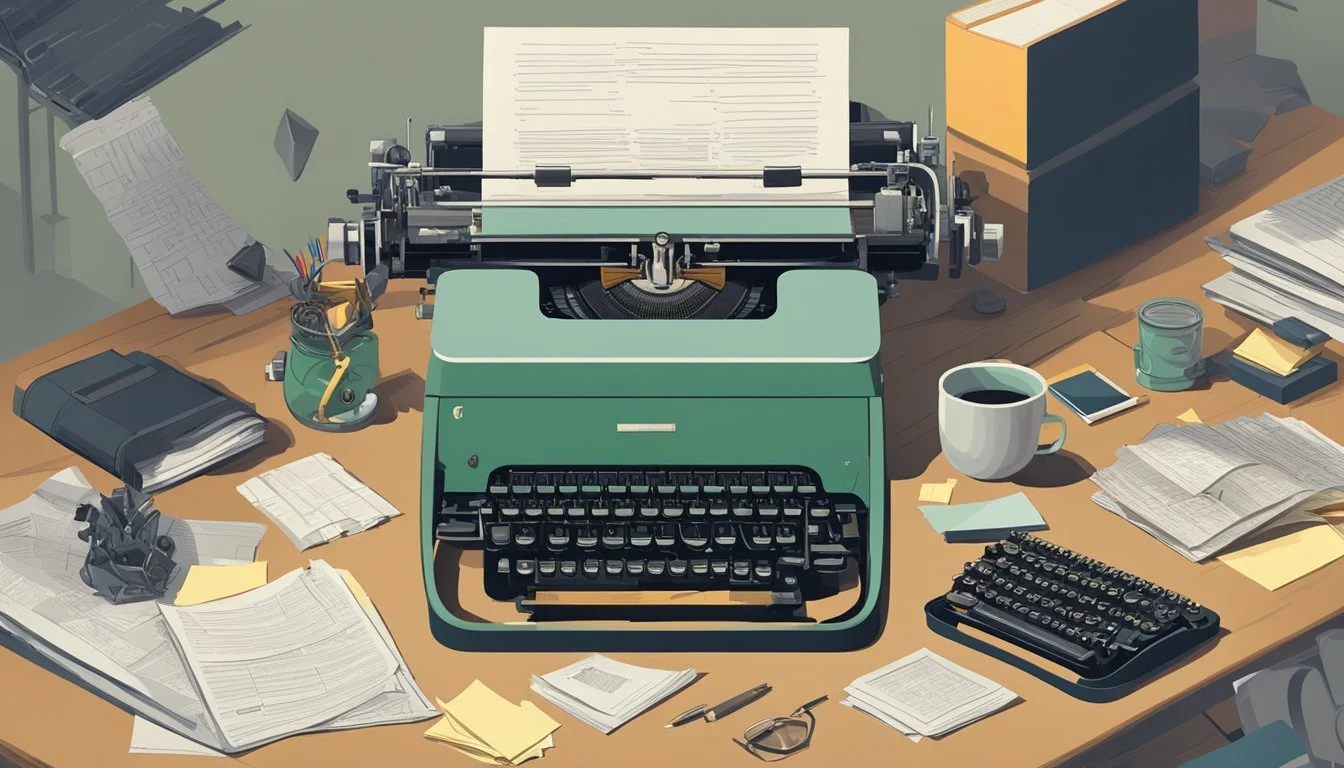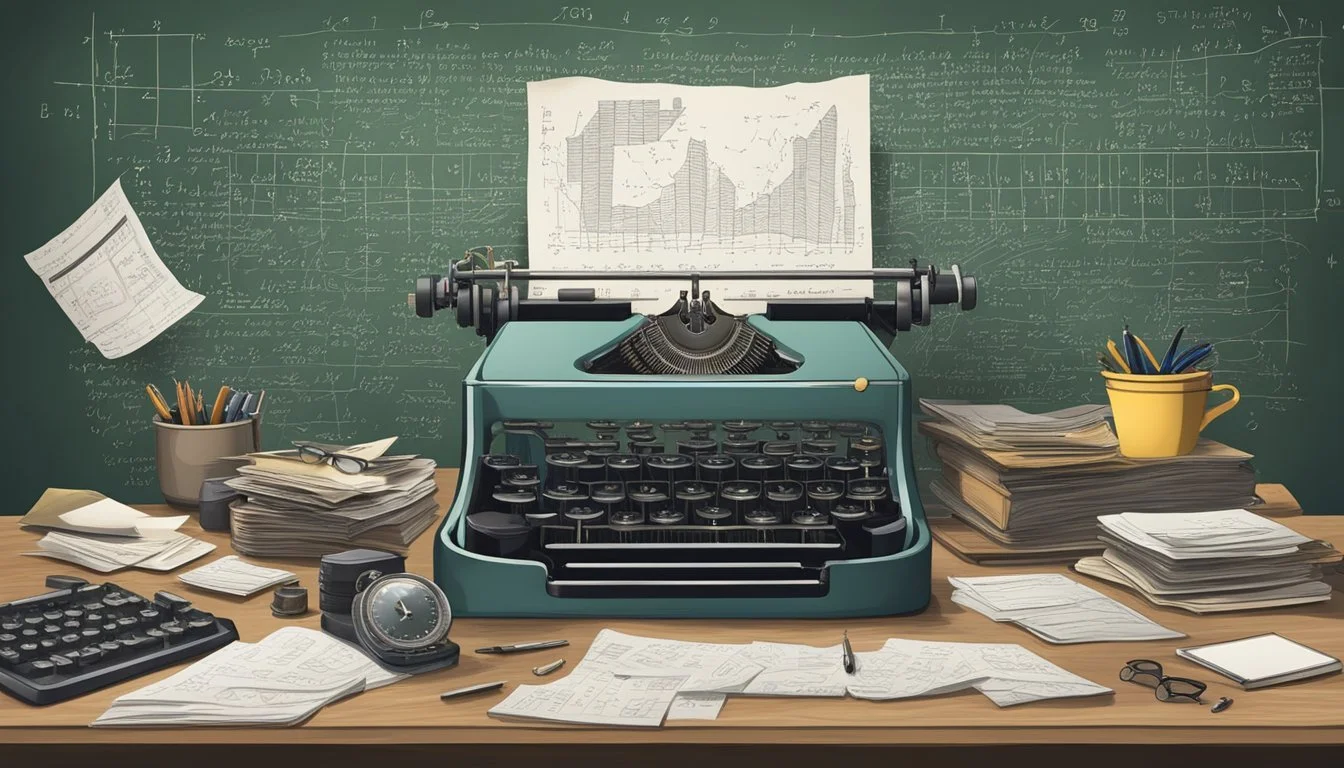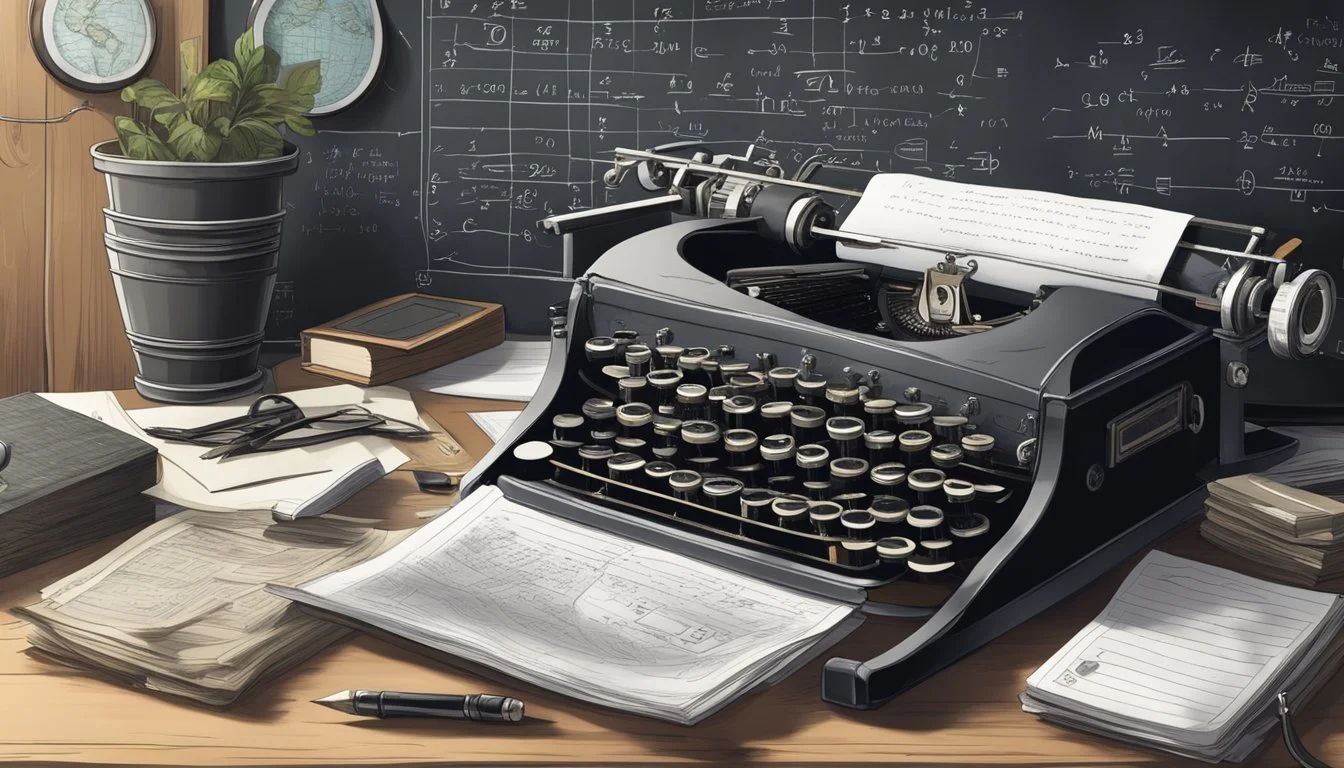Cracking the Code: The True Tale Behind The Imitation Game
Turing's Untold Story
Alan Turing's life and work during World War II have captivated audiences through the film "The Imitation Game." The movie, starring Benedict Cumberbatch, portrays Turing's crucial role in breaking the Nazi Enigma code at Bletchley Park. While the film brings attention to this brilliant mathematician's contributions, it takes some liberties with historical accuracy.
Turing's groundbreaking work in cracking the Enigma code shortened World War II by an estimated two to four years, potentially saving millions of lives. His innovative approach to code-breaking laid the foundation for modern computing and artificial intelligence. The film dramatizes Turing's efforts, depicting his struggles and triumphs as he led a team of cryptanalysts in their race against time.
The true story of Alan Turing extends beyond his wartime achievements. His personal life, including his sexuality and tragic end, is touched upon in the movie but differs in some aspects from historical accounts. The film's portrayal of Turing's relationship with Christopher Morcom, for instance, simplifies what was actually an unrequited attraction on Turing's part. Despite these cinematic embellishments, "The Imitation Game" succeeds in bringing wider recognition to Turing's vital contributions to history and science.
The Historical Context
The development of modern computing, World War II cryptography, and Alan Turing's groundbreaking work converged to shape a pivotal moment in history. These elements set the stage for the events depicted in "The Imitation Game" and had far-reaching consequences for technology and warfare.
The Advent of Modern Computing
The early 20th century saw rapid advancements in computing technology. Mechanical calculators gave way to more sophisticated machines. In the 1930s, analog computers emerged, capable of solving complex equations.
Alan Turing's 1936 paper "On Computable Numbers" introduced the concept of a universal machine. This theoretical device could simulate any other machine's logic, laying the foundation for modern computers.
IBM and other companies developed punch-card tabulators. These machines processed data for businesses and governments, foreshadowing the digital revolution to come.
World War II Cryptography
Cryptography played a crucial role in World War II. Nations raced to secure their communications and break enemy codes.
Germany's Enigma machine was a formidable encryption device. It used rotors to scramble messages, creating billions of possible combinations.
The Allies devoted significant resources to codebreaking. Bletchley Park in England became the center of British cryptanalysis efforts.
Polish mathematicians made early progress against Enigma. They shared their findings with the British and French before the war began.
Alan Turing's Contributions
Alan Turing joined Bletchley Park in 1939. He quickly became a key figure in the British codebreaking effort.
Turing improved on Polish methods for attacking Enigma. He developed the "bombe," an electromechanical device for finding Enigma settings.
His work went beyond Enigma. Turing contributed to breaking other German ciphers, including the more complex Lorenz machine.
Turing's insights into computability found practical application in codebreaking. His ideas influenced the development of early computers like Colossus.
Plot Synopsis
"The Imitation Game" chronicles Alan Turing's efforts to crack the German Enigma code during World War II. The film portrays Turing's brilliance, personal struggles, and the high-stakes race to decipher enemy communications.
Character Development
Alan Turing emerges as a complex, socially awkward genius. His intellect sets him apart, but also isolates him from colleagues. The film explores Turing's relationships, particularly with Joan Clarke, a fellow codebreaker. Their friendship provides insight into Turing's hidden homosexuality and internal conflicts.
Benedict Cumberbatch's portrayal captures Turing's intensity and vulnerability. Supporting characters like Commander Denniston and Hugh Alexander add depth to the narrative, showcasing the team dynamics at Bletchley Park.
Key Plot Points
The film centers on Turing's creation of an electromechanical machine to crack Enigma. This groundbreaking device, a precursor to modern computers, becomes pivotal in the Allied war effort.
Turing faces numerous obstacles:
Skepticism from military brass
Time pressure as the war escalates
The daily challenge of deciphering ever-changing German codes
A crucial turning point occurs when Turing's team intercepts a message they can partially decipher, leading to a breakthrough in their work.
Dramatization vs. Reality
While "The Imitation Game" captures the essence of Turing's achievements, it takes creative liberties for dramatic effect. The film compresses events and simplifies technical aspects of codebreaking.
Key differences from historical accounts:
Exaggeration of Turing's social difficulties
Heightened interpersonal conflicts within the team
Simplified portrayal of the codebreaking process
The movie emphasizes Turing's personal life and sexuality more than his actual wartime experiences. It creates a compelling narrative but diverges from the full complexity of historical events at Bletchley Park.
Character Analysis
The Imitation Game presents a complex portrayal of Alan Turing and the supporting characters involved in breaking the Enigma code. The film's character development and interactions offer insights into the personalities and relationships at Bletchley Park during World War II.
Alan Turing's Portrayal
Benedict Cumberbatch's portrayal of Alan Turing depicts him as a brilliant but socially awkward mathematician. The film emphasizes Turing's analytical mind and his struggle to connect with others. His character is shown to be direct, often blunt, and focused solely on his work.
Turing's homosexuality is addressed, though not as prominently as his intellectual pursuits. The movie portrays his romantic relationship with Joan Clarke and his past feelings for Christopher Morcom, his childhood friend.
The film takes some liberties with Turing's personality, implying he may have been on the autism spectrum. This interpretation adds depth to his character but may not be entirely historically accurate.
Supporting Characters
Joan Clarke, played by Keira Knightley, is portrayed as Turing's intellectual equal and close friend. Her character highlights the challenges faced by women in the male-dominated field of cryptanalysis during the 1940s.
Commander Alastair Denniston, portrayed by Charles Dance, represents the military establishment's resistance to Turing's unconventional methods. His character provides conflict and tension within the codebreaking team.
Hugh Alexander and John Cairncross, played by Matthew Goode and Allen Leech respectively, round out the main codebreaking team. They offer different perspectives on Turing's work and personality.
Character Interactions and Dynamics
The film showcases the evolving relationships between team members at Bletchley Park. Initially, Turing's abrasive personality creates friction with his colleagues. As the story progresses, mutual respect and understanding develop among the characters.
Turing's relationship with Joan Clarke is central to the narrative. Their intellectual connection and Clarke's support for Turing despite his sexuality form a key emotional thread in the film.
The interactions between Turing and his superiors, particularly Denniston, highlight the clash between traditional military thinking and innovative scientific approaches. This conflict drives much of the drama in the codebreaking efforts.
The film also explores the secretive nature of the work at Bletchley Park, showing how it affects the characters' personal lives and relationships outside of their professional environment.
Cinematic Techniques
"The Imitation Game" employs various cinematic techniques to bring Alan Turing's story to life. These techniques enhance the narrative and immerse viewers in the tense world of codebreaking during World War II.
Visual Storytelling
The film uses visual cues to convey the complexities of codebreaking and Turing's mental processes. Close-ups of intricate machinery and scribbled equations populate the screen, mirroring the puzzle-like nature of the Enigma code.
Muted color palettes reflect the somber wartime atmosphere, while brighter hues highlight moments of breakthrough or personal connection. The cramped quarters of Bletchley Park contrast with expansive exterior shots, emphasizing the claustrophobic pressure faced by the codebreakers.
Director Morten Tyldum employs recurring visual motifs, such as the spinning rotors of the Enigma machine, to create a sense of urgency and progress throughout the film.
Soundtrack and Score
Alexandre Desplat's Oscar-nominated score plays a crucial role in setting the film's tone. The music combines electronic elements with traditional orchestral sounds, echoing the blend of cutting-edge technology and classical thinking in Turing's work.
Ticking clock sounds interwoven with the score create tension and underline the race against time. Softer piano melodies accompany more personal moments, providing emotional depth to Turing's character.
The soundtrack swells during key revelations and breakthroughs, heightening the impact of these pivotal scenes for viewers.
Editing and Pacing
"The Imitation Game" uses non-linear storytelling, jumping between three time periods in Turing's life. This editing technique creates a puzzle-like structure, mirroring the codebreaking theme.
Quick cuts between characters and locations during intense problem-solving scenes convey the frantic energy of the codebreakers' work. In contrast, longer takes are used for emotional moments, allowing viewers to connect with the characters.
The film's pacing accelerates as the team gets closer to cracking Enigma, with shorter scenes and faster editing building suspense. This rhythm keeps audiences engaged and reflects the mounting pressure on Turing and his colleagues.
Historical Inaccuracies
"The Imitation Game" takes creative liberties with Alan Turing's life story. The film blends fact and fiction, altering key events and character portrayals. These changes have sparked debates about historical representation and shaped public perception of Turing's legacy.
Fictionalized Elements
The movie invents several plot points for dramatic effect. Hugh Alexander is portrayed as Turing's rival, when in reality they had a cordial working relationship. The film depicts Turing naming the codebreaking machine "Christopher" after his childhood friend, but this is fictional.
Turing's personality is exaggerated, showing him as more socially awkward than historical accounts suggest. The movie also fabricates a Soviet spy subplot involving Joan Clarke, which has no basis in fact.
Debates on Historical Representation
Historians have criticized the film's departures from reality. Some argue these changes oversimplify complex historical events and relationships. Others contend that dramatic license is necessary to engage audiences with Turing's story.
The movie's portrayal of Turing's sexuality and persecution has been both praised and contested. While it highlights the injustice he faced, some critics argue it doesn't fully capture the nuances of his experiences.
Impact on Public Perception
"The Imitation Game" has significantly influenced public understanding of Alan Turing. It brought his contributions to a wider audience, increasing recognition of his role in World War II codebreaking efforts.
However, the film's inaccuracies may have created misconceptions about Turing's life and work. Some viewers may mistake fictional elements for historical fact. This has led to ongoing discussions about the responsibility of historical films in shaping public knowledge.
The movie has also sparked renewed interest in Turing's legacy, prompting further research and debate about his life and achievements.
Real-Life Implications
Alan Turing's work and personal struggles continue to resonate decades after his death. His contributions to computer science and artificial intelligence laid the groundwork for modern technology, while his persecution highlights ongoing challenges faced by LGBTQ+ individuals.
Turing's Legacy
Turing's theoretical and practical work fundamentally shaped the field of computer science. His concept of the Universal Turing Machine became the foundation for modern computers. The Turing Test, which he proposed to evaluate artificial intelligence, remains influential in assessing machine capabilities.
Turing's wartime codebreaking efforts at Bletchley Park significantly impacted World War II's outcome. Historians estimate his work shortened the war by up to two years, potentially saving millions of lives.
His ideas on morphogenesis in biology continue to influence scientific research in developmental biology and pattern formation.
Modern Reflections on Turing's Impact
Turing's work underpins much of today's digital world. Smartphones, laptops, and complex algorithms all trace their roots to his pioneering concepts.
His persecution for homosexuality sparked discussions about social justice and equality. Many tech companies now actively promote LGBTQ+ inclusion, partly inspired by Turing's story.
The "Alan Turing law" in the UK posthumously pardoned thousands convicted under historical anti-gay laws. This legislation demonstrates how Turing's experiences continue to drive legal and social change.
Recognition and Rehabilitation
In 2009, British Prime Minister Gordon Brown issued a public apology for Turing's treatment. Queen Elizabeth II granted him a posthumous pardon in 2013.
Turing appeared on the Bank of England £50 note in 2021, recognizing his scientific contributions. Numerous awards, institutions, and landmarks now bear his name.
The "Alan Turing Institute" was established as the UK's national institute for data science and artificial intelligence. This honors his legacy while advancing fields he helped create.
Annual "Turing Lectures" at major universities celebrate his intellectual contributions and promote ongoing research in computer science.
Critical Reception
"The Imitation Game" garnered widespread acclaim for its portrayal of Alan Turing's life and work. The film's performances, historical significance, and emotional impact resonated with critics and audiences alike.
Reviews and Ratings
"The Imitation Game" received largely positive reviews from critics. Many praised Benedict Cumberbatch's performance as Alan Turing, calling it nuanced and compelling. The film holds a 90% approval rating on Rotten Tomatoes, based on 293 reviews. Critics highlighted the movie's emotional depth and its ability to bring Turing's story to a wider audience.
Some reviewers noted historical inaccuracies but generally agreed that the film successfully captured the essence of Turing's contributions and personal struggles.
Awards and Nominations
The film's critical success translated into numerous awards and nominations. "The Imitation Game" received eight Academy Award nominations, including Best Picture, Best Actor for Cumberbatch, and Best Supporting Actress for Keira Knightley. It won the Oscar for Best Adapted Screenplay.
The movie also earned five Golden Globe nominations and three BAFTA wins. These accolades cemented its place as one of the most recognized films of 2014.
Cultural and Educational Impact
"The Imitation Game" sparked renewed interest in Alan Turing's life and work. The film's release coincided with increased public awareness of LGBTQ+ issues in history. Many educational institutions incorporated the movie into their curricula, using it to discuss topics such as computer science, World War II history, and social discrimination.
The movie also contributed to efforts to posthumously honor Turing. It helped raise awareness about his unjust treatment and supported campaigns for his official pardon and recognition as a national hero in the UK.
Conclusion
"The Imitation Game" brought Alan Turing's extraordinary story to the big screen. While the film took some creative liberties, it highlighted Turing's crucial role in breaking the Enigma code during World War II.
The movie succeeded in raising awareness about Turing's groundbreaking work in computer science and artificial intelligence. It also shed light on the persecution he faced due to his sexuality.
Turing's contributions went far beyond codebreaking. His innovations laid the foundation for modern computing and continue to influence technology today.
The film sparked renewed interest in Turing's life and accomplishments. It prompted discussions about LGBTQ+ rights and the importance of diversity in scientific fields.
"The Imitation Game" serves as a tribute to an unsung hero. It reminds us of the brilliant minds whose work shaped history, often without recognition during their lifetimes.
While not entirely historically accurate, the movie achieved its goal of bringing Turing's story to a wider audience. It inspired viewers to learn more about this remarkable mathematician and his enduring legacy.





